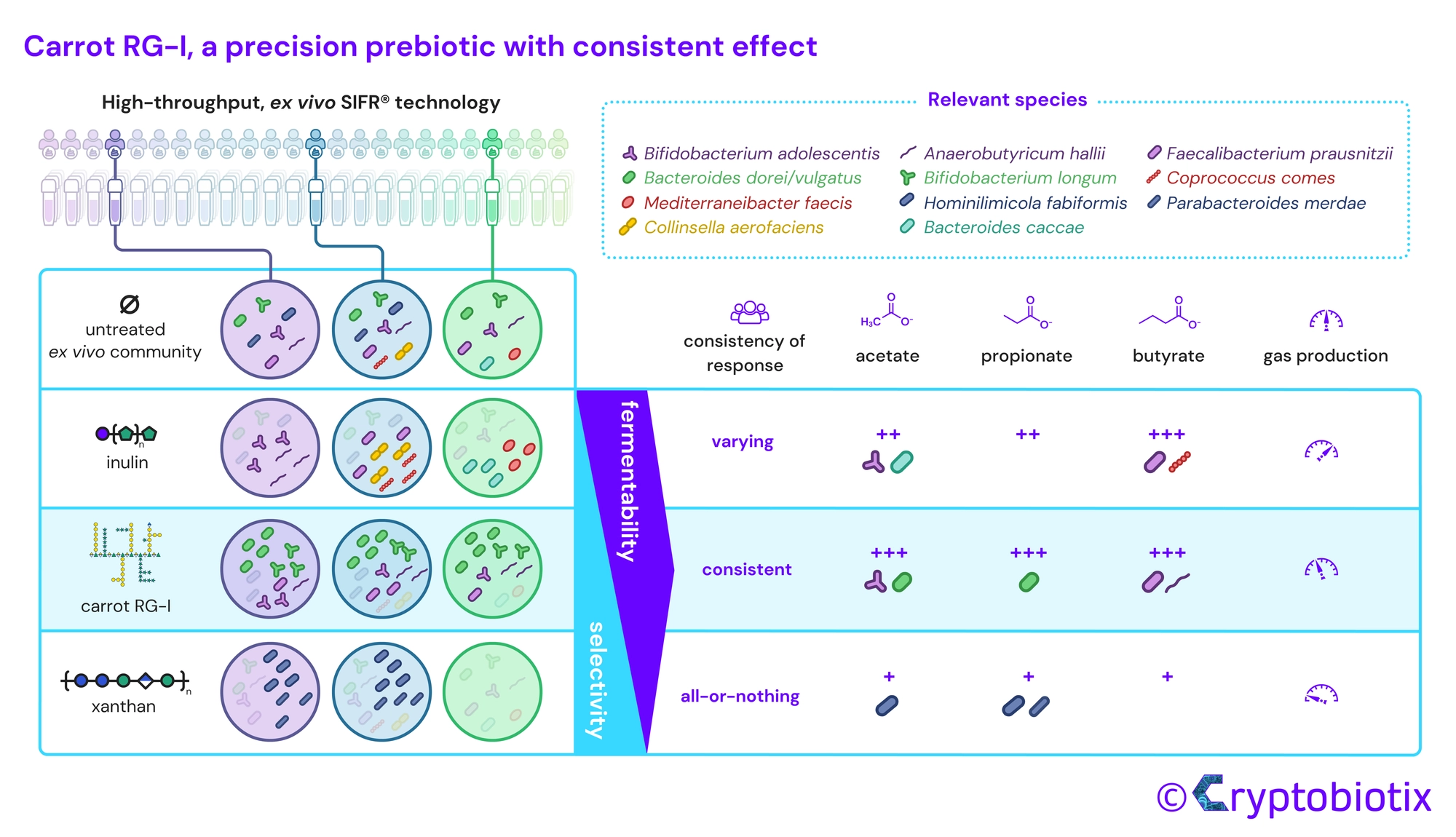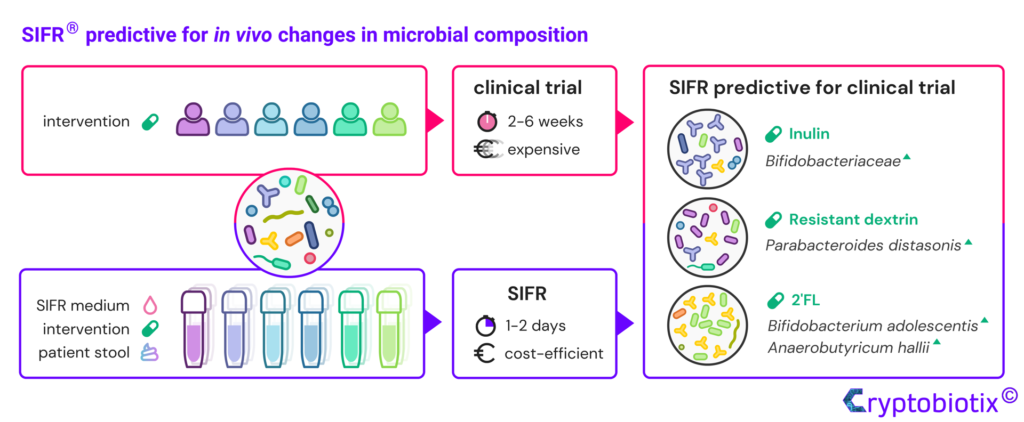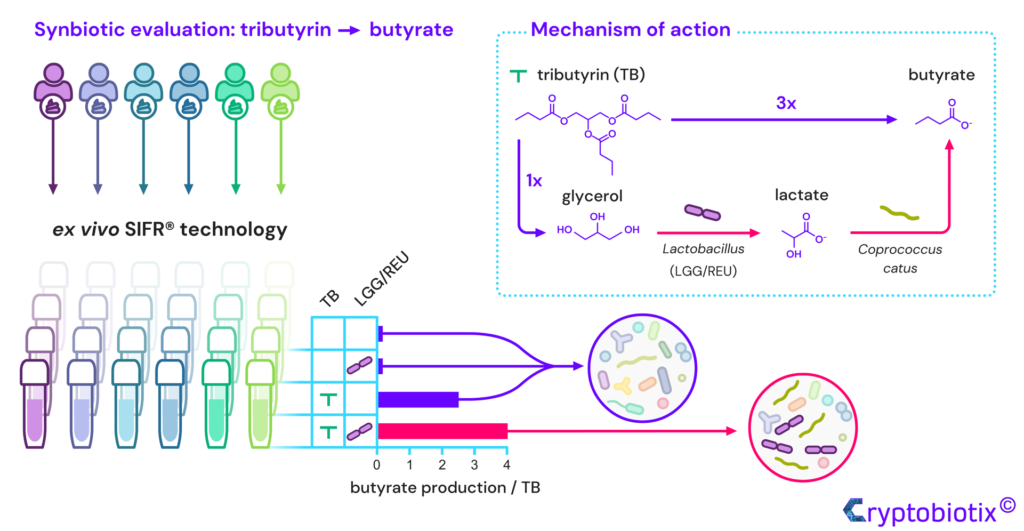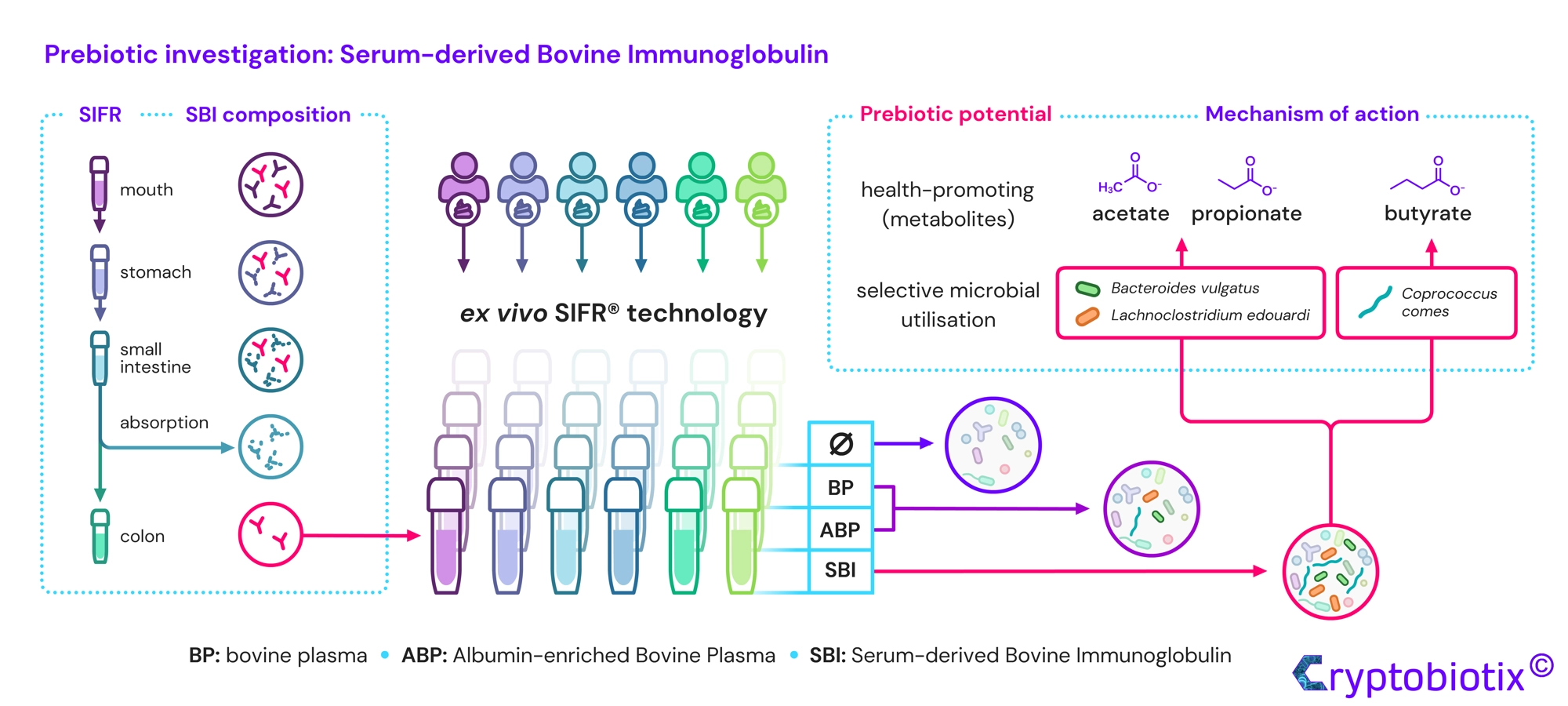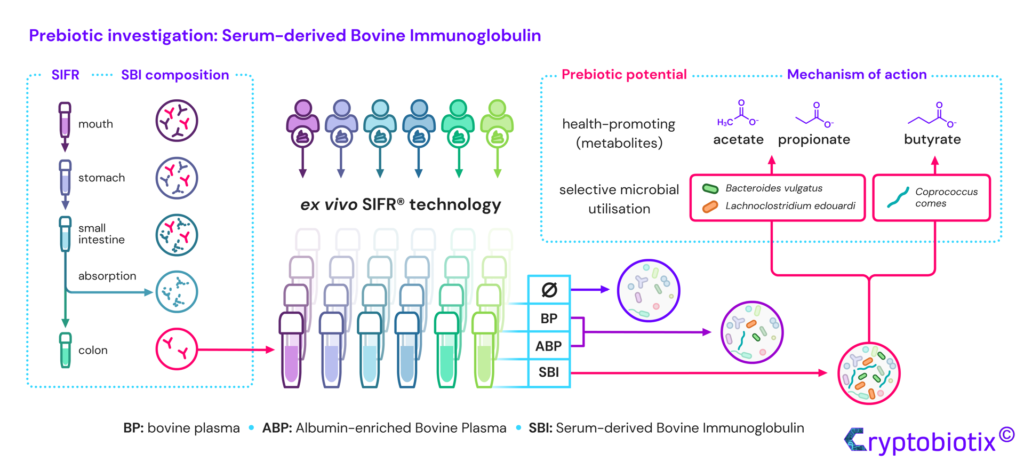
Van den Abbeele et al, 2023, Nutrients
Gut microbiome research suffers from low predictivity, which is caused by interpersonal differences in microbiota composition. The specificity of prebiotics may be used to steer the composition of the gut microbiome and consequently guide towards more predictive research outcomes. This study compared the selectivity of carrot RG-I (cRG-I) to two other substrates, inulin (IN) and xanthan (XA), and found that cRG-I supplementation led to a homogenisation of gut microbial composition and metabolite production across individuals. This contrasted with IN and XA, which increased interpersonal differences. The study involved 24 human adults and utilized the ex vivo SIFR® technology, which combines high throughput with precision and is validated to generate predictive insights for clinical findings. Key findings from the study include that cRG-I selectively stimulated taxa consistently present among human adults, including those related to keystone species and butyrate-producing taxa. Additionally, cRG-I altered fermentation activity, producing higher acetate and propionate and generating less gas than IN. The results suggest that the specificity of cRG-I could lead to more predictable outcomes compared to less specific or overly specific substrates.


